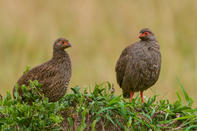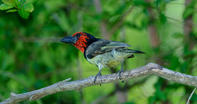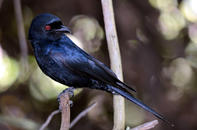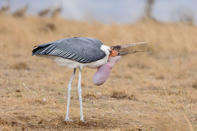Dawn Chorus
Birds sing to advertise their territories and to attract mates and subsequently build bonds with those mates. Birds sing most earnestly in the morning when the air is clear and still and sound travels furthest and loudest. This is known as the ‘dawn chorus’.

They also utilize the dawn chorus to remind their neighbours that in spite of a night of darkness since last they called, they are still very much in attendance of their turf. Birds call in the late afternoon again to establish ownership of an area before they sleep. Individual species of birds may have more than one signature sound.
Different sounds have slightly different functions. A call is the contact communication used between both sexes of bird all year round. It may alert an individual as to the location of its chick or the whereabouts of its other flock members. It may also help birds to identify one another as each ‘voice’ is unique. Alarm calls alert other birds in the vicinity of danger.
A song is usually a longer, more melodic and repeated tune that advertises a male’s territory and status and attracts females. Interestingly the message a particular song gives to an intruder is different to the message the same song might give to a potential female mate. Males typically use song to serenade their mates to sustain their bond throughout the duration of their relationship.
Duetting

Some birds use duetting to reinforce their pair bond. This usually occurs between the members of a monogamous pair like black-collared barbets that stay together for years and need to maintain their relationship and mutual territory on an ongoing basis.
A duet is a synchronized call where the one member of the pair completes the call of the other member so precisely that the resultant tune appears to be only one song.
Black-collared barbets have excellent rhythm and the split second ‘du-‘ of the one bird is instantly responded to with a ‘-pudley’ by the other to create the trade-mark and strident ‘du-poodley…du-poodley…du-poodley…’ that denotes their territory. Crested francolin also duet in this rhythmical manner and it is suggested that they repeat ‘Beer and cognac…beer and cognac…etc’.
Mimicry

Some birds attempt to impress potential mates by copying phrases of songs and sounds belonging to other species of bird in a process known as mimicry. The fork-tailed drongo and robin-chats are experts at mimicking.
The complexity of the assembled tune is suspected to be an indication of fitness to females. Males that are able to remember and knit together long sequences of phrases are considered better partners.
A strong mimicked vocal signal also may intimidate rivals and convince them of the singer’s superiority. Indigobirds are brood parasites and mimic the calls of their hosts in order to find their nests as well as find one another.
Other Sounds

Some birds use sounds other than vocalizations to establish communication. Bearded woodpeckers are masters of tapping choosing resonating logs on which to drum with their sturdy bills to declare territory and attract mates.
Other birds such as storks (especially marabous), helmetshrikes and the black-backed puffback use bill snapping in their mating displays and the wing claps of some species of bird in flight are also strong communication techniques used during courtship.
By Megan Emmett